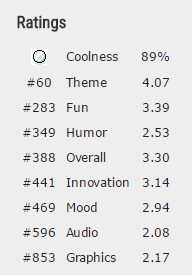As always, I had quite a few cool ideas for what I wanted to focus on for 2017. I considered focusing on making another game for the year, albeit something a bit more realistic than my last attempt. I also thought about making a software development/game development blog which I’d update every week for the year. And I also thought about spending a year trying to learn a new language, something I’ve been wanting to do on and off for a few years now. In the end, I had to take a step back and think about another important skill that I absolutely dread learning, wouldn’t enjoy doing at all, but will be important for both my personal and professional life. Learning to drive.
I did used to take regular lessons about 3 1/2 years back, but it was expensive, time-consuming, and I hated every minute of it. Unfortunately there’s a lot of companies out there that just won’t consider you for a position unless you’re able and willing to drive. Along with that there’s also a lot of activities in my personal life where driving would be a lot more useful (although mostly it would be acting as the designated driver). Personally I prefer cycling everywhere, but this is one of those cases where I have to go against what I want, and focus on what I need to do. The moment self-driving cars become affordable though, I’ll be making the switch.
The plan
As always, a plan helps for these things. Last time I never got around to taking my theory test, and that’s what held me back from being able to take my final practical test. This time around I’m going to be focusing on the theory first before I start spending money on the practical. Thankfully there’s a lot of guides and information out there on what you need to do for the theory test and I don’t think I’m going to have any trouble with the multiple-choice part. One thing that is worrying me though is the hazard awareness test, not because I don’t think I’ll spot the hazards, but because the system sounds very intuitive and confusing to use. I’ll want to find a few examples of this online to use so I don’t end up doing something stupid like clicking too many times and failing instantly.
My plan is to complete this part quickly, late February/early March at the latest. Then I’ll move on to taking practical lessons again. I don’t think it’ll take me too long to get back up to speed with the skills I already learned, but it will take me some time to learn all the local routes. I don’t think it’ll take me the entire year to do this, but the point isn’t to spend a year doing it, but to make sure I complete it within this year. This is good, because I really don’t want to take my practical test during the autumn and winter, when the roads start getting bad and I’ll be spending a lot of time doing night driving.
One thing about the resolution that helps is posting about it. I don’t see much reason to turn this into a regular series of posts, but I will be making a few updates along the way as I’m ready to take the different tests, and ultimately pass.
